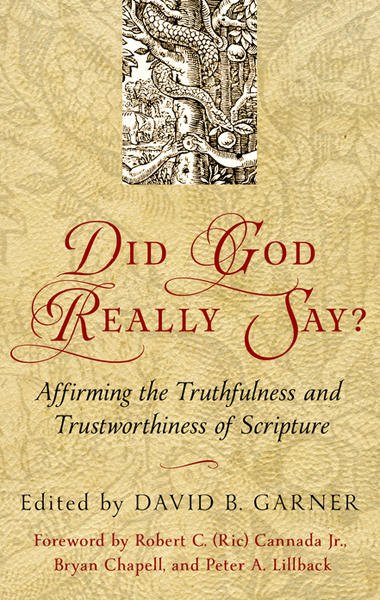
Life and relationships have become all too superficial in our present age. It is the easiest thing in the world to say we know someone and yet really have nothing more than a nodding acquaintance. Indeed with the influence of the media - television in particular - it is possible to see some famous personality on the street and instinctively feel that we know them, even though we have never even met them. They are really complete strangers to us. Sadly the same can be true of our reaction to the greatest personality ever to step on to the stage of human history - the Lord Jesus Christ. The critical difference about our knowledge of him is that it impinges upon our eternal destiny. Thus one of the most penetrating questions a person can ask in life is, ‘Who is Jesus Christ?’
At one level it is a question for those who have had little or no exposure to the Christian faith, either in terms of its teaching, or its practice in the life of those who are Christians. At the heart of a missionary’s work lies the task of presenting and explaining Jesus to people in other cultures who have never even heard his name before. Of course, it is not just missionaries in other countries who meet such people these days. Our own secularised western world is full of people for whom ‘Jesus Christ’ is nothing more than a profanity. The church has a mission field on its own doorstep.
At another level it is also a question for those who claim to be believers, but for whom Christianity is nothing more than a label which they have applied to themselves. They really need to ask themselves some probing questions about the way Jesus affects the way they live and how they worship. Paul’s warnings about a faith which is all form and no content (2Ti 3.5) are real - the dangers of a Christ-less Christianity are too serious to contemplate.
Jesus himself provides the bottom line on the issues which are at stake. As he prepares for his ultimate ordeal on the cross and is engaged in prayer beforehand, he reminds his Father in heaven, ‘This is eternal life: that they may know you, the only true God, and Jesus Christ whom you have sent’ (Jn 17.3). The very essence of eternal life is to know God through Jesus Christ his Son. To know him, not merely in terms of being able to pass examinations on him, but to know him in the most intimate and life-changing fashion. Then we will find that the answer to our question about Jesus is really the answer to the question of life itself.
Who, then, is this Jesus and what is it about him uniquely which makes him the pivot on which turns the destiny of all men? One of the most concise, yet pointed answers is to be found in the Apostles’ Creed. There we find five axiomatic truths about the identity of Jesus, each of which underpin the work he came to do.
Eternal Son
‘I believe...in Jesus Christ his [God the Father Almighty’s] only begotten Son...’ To begin to understand Jesus, we cannot start in time, but rather eternity and the mystery of God himself. Throughout the Old Testament God made himself known as the one true God who is one and who alone is to be worshipped by all creation (Dt 6.4; Isa 45.5). He is the God of all creation who would brook no rivals. Yet, intriguingly, he made himself know to the world in a way which suggested there was more to his oneness than met the eye. Right at the very beginning of the Bible in the account of creation there are several details which are at the very least unusual. The Hebrew word for God is plural in form, yet is used with singular forms of verb (Ge 1.1). When he comes to create man, he enters into consultation and says, ‘Let us make man in our image...’ (Ge 1.26), as opposed to ‘Let me...in my...’. These details in themselves prove nothing, but in light of later revelation they clearly point to the fact that the God who is one, is also the God who is three. He exists in everlasting Trinity: God the Father, God the Son and God the Holy Spirit.
The significance of the second Person of the Trinity is highlighted sharply by the apostle John in his Gospel where he starts his account of Jesus with the words, ‘In the beginning was the Word.’ (Jn 1.1). The ‘Word’ who ‘became flesh and made his dwelling among us’ (Jn 1.14) was none other than Jesus of Nazareth, the Christ of God. He was the One who was himself profoundly conscious of the glory that was inherently his and yet was veiled from human eyes during his time on earth, yet which would be restored when his work on earth was done (Jn 17.5).
To know Jesus is to know God. It is to be face to face with the one whose identity lies in eternity and whose power and glory towers over all. He takes our breath away, as he does with the angels of Heaven as the One who is worthy of all praise. He captures our hearts as the One who alone is worthy of our trust. The other gods of the world speak about salvation, but only in terms of telling men what they must do to save themselves. The God of the Bible speaks about salvation and tells the world what he himself has done to bring it (Jn 3.16).
Incarnate Lord
The way in which that divine intervention took place is almost too much for words to express. God became man. The Infinite stepped into the finite. The Creator took upon himself the flesh of his creature. To think that this began in the unique miracle of conception which occurred in the womb of a young girl from an obscure village in an unknown corner of Palestine only serves to magnify the wonder of what happened. It was not merely, in the words of Charles Wesley, that Jesus was ‘Our God contracted to a span’, but rather to a tiny cluster of dividing cells in a woman’s body. ‘He made himself nothing...being made in human likeness’ (Php 2.7). He was ‘conceived of the Holy Ghost; born of the Virgin Mary’.
Yet such was the need of those he came to save, ‘he had to be made like them in every way’ (He 2.17). If he, as the ‘second man’ and ‘last Adam’ (1Co 15.45, 47) was going to undo the damage done to humanity and to creation by the father of the race, then he had to actually take human flesh in order to redeem it.
There is a strong temptation to play down the genuineness of Christ’s humanity by always seeing it as overshadowed by his deity. Yet he was truly a man among men. He knew what it was to be hungry (Mt 4.2), thirsty (Jn 19.28), weary (Jn 4.6) and at times even ignorant of facts (Mk 5.30). Yet all of this had a unique contribution to make to the greatness of his redemption. The writer to the Hebrews draws it out graphically, writing to Christians who thought no-one could feel for them in their plight, by pointing to Jesus, their great High Priest who is truly able to sympathise with those in need and extend the help most suited to their circumstances (He 4.14-16).
By becoming incarnate, Jesus bridged the great divide between a holy heaven and a fallen earth and in his Person joined humanity and deity in an eternal union which would have eternal implications for all who come to him by faith.
Suffering Servant
Great and all as the incarnation was, it was not in itself sufficient to redeem a lost humanity. For the Saviour to save, it was necessary for him to suffer. Thus, in the words of the creed, we confess that Jesus, ‘suffered under Pontius Pilate, was crucified, dead and buried; he descended into hell’. He was none other than the Suffering Servant of the Lord predicted by Isaiah almost 700 years beforehand.
He came not only as Priest whose job it was to offer sacrifice for the sins of the people, but also as sacrifice - the only sacrifice that could ever satisfy God’s perfect requirements for perfect atonement (He 9.14). He faced head-on the sobering fact of divine justice that, ‘without the shedding of blood there is no forgiveness’ (He 9.22).
The whole concept of atonement by bloody sacrifice has been deemed the ultimate in political incorrectness, not just in recent times, but for the past two centuries and more. For many, a bloodless Christianity is the only kind of palatable Christianity. They are quite content to admire Jesus as their great role model, listen to him as their great teacher, but they will not look to him as the One who took their place.
The cross has never been a part of the gospel with which people can feel comfortable. Even in Paul’s day it was a scandal for some and a laughing-stock for others (1Co 1.23). Yet without it there could have been no salvation. Jesus could not have uttered the most critical words of his entire mission, ‘It is finished’ (Jn 19.30), nor looked upon the travail of his soul and been satisfied (Isa 53.11).
In his death, he not only descended into the place the Greeks called ‘Hades’ - the realm of the dead, he plumbed the very depths of the hell of eternal torment in the place of sinners by whom it is deserved. In that moment, which has become the very axis of history, the body of Jesus was sacrificed ‘once for all’ in the place of his people (He 10.10). As Peter told the scattered church of his day, ‘Christ died for sins once for all, the righteous for the unrighteous, to bring you to God’ (1Pe 3.18). His sufferings are his people’s salvation.
Exalted Saviour
There has been much debate among theological specialists as to which truth lies at the very heart of the gospel. Some have argued, for the kind of reasons outlined above, that it must be the cross. Paul seems to summarise his entire ministry with the words, ‘I resolved to know nothing while I was with you except Jesus and him crucified’ (1Co 2.2). And yet the balance of Paul’s recorded ministry in the epistles seems to focus more upon the resurrection of Jesus. The solution to the problem is not to exalt one above the other, but to recognise that it is impossible to have one without the other. The cross would have been a failure without the resurrection and the resurrection would be meaningless without the cross. Hence the next great affirmation about Christ which is found in the creed declares, ‘the third day, he rose from the dead; he ascended into heaven; and sitteth at the right hand of God the Father Almighty’.
As we try to understand who Jesus is and what he has accomplished in redemption, we not only see him in his pre-existent glory, follow him into the ever-downward spiral of his humiliation into the depths of punitive torment, but ultimately watch him soar in exaltation to the place of highest honour in heaven (He 12.2). The exaltation of Jesus does not merely consist of what took place when he was taken up into heaven before the watching and wondering eyes of the disciples (Ac 1.9), but in what had its roots in the miracle of the resurrection. Paul tells the Christians at Rome that it was through the resurrection that Jesus ‘was declared with power to be the Son of God’ by the Holy Spirit (Ro 1.4). The glory which had been veiled in human flesh throughout his life and ministry on earth was, in the resurrection and during the forty days which followed, revealed in the new body Jesus displayed when he emerged from the tomb. The significance of that event and that special body is something which Paul latches onto and expounds in his first letter to the Corinthians.
He argues with those who doubt the very idea of resurrection in principle by saying, ‘if Christ has not been raised, our preaching is useless and so is your faith’ (1Co 15.14). It is a crucial element to the Christian gospel and to Christian faith. The glory of the message hangs upon the glory of what really happened. It is noting short of the glory of final victory - death has in truth been defeated, the powers of the grave vanquished. More than that, the character of Christ’s resurrection body - with the obvious glory that attaches to it - becomes the prototype of the bodies that will be the property of the saints in heaven after his return (1Co 15.35-57).
This great truth gives a new and intriguing twist to our understanding of who Jesus is: he is the One who has already taken human flesh to glory. When he returned to the place of honour at his Father’s right hand, he did not cease to be man or abandon his flesh, he took his humanity with him as he ‘passed through the heavens’ (He 4.14). To borrow someone else’s phrase, ‘there is dust of the earth in heaven for us’. Yes there are saints in glory at this moment, but they are disembodied spirits (He 12.23). The only flesh in that wonderful place is the flesh of Jesus. It is there - he is there - as the living guarantee that all who put their faith in him will one day be raised from death as he was and taken to the glory where he is (1Co 15.20).
The exaltation of Christ provides not only the pattern, but also the assurance of the future exaltation of our humanity which was debased by the fall. Only as we are found in him can we have our human dignity truly restored and reinstated to the glory for which it was intended. The glory which we receive from him when we first share in his resurrection life is but a foretaste of the glory that will be ours when he comes to lift us from our graves and take us home to a glorified world and universe.
Coming Judge
It is that future day of his return which provides the final clue to the identity of Jesus and the reason we must trust him. Now he is enthroned at the right hand of his Father and ‘from thence he shall come to judge the quick and the dead’. It is the risen, exalted reality of Christ that not only provides hope and comfort for all who trust him, but should also strike fear into those who do not. Paul uses the twin truths of resurrection and exaltation to buttress the great command of the gospel addressed to ‘all people everywhere’ to repent (Ac 17.30). Rejection of Christ is not just something for which we will be accountable in general, we will be accountable to him, for we must all one day meet him.
Who, then, is this Jesus? He is Son of God and Son of Man, Saviour of his people and Judge of all the earth. He is the One to whom we must go by faith if we are to escape the terror which is to come and find an everlasting home in God’s New Creation.

The Alliance of Confessing Evangelicals is member supported and operates only by your faithful support. Thank you.















 © Alliance of Confessing Evangelicals
© Alliance of Confessing Evangelicals


